Introduction
Henna tattoos, also known as mehndi, are a beautiful and meaningful form of body art that has been practiced for centuries across cultures in the Middle East, South Asia, and North Africa. Made from the powdered leaves of the henna plant, this natural dye is used to create intricate temporary designs on the skin—most commonly on the hands and feet. Traditionally used for celebrations like weddings and festivals, henna has found a global audience in recent years, appreciated both for its cultural significance and its aesthetic appeal.
Unlike permanent tattoos, henna tattoos are non-invasive, painless, and fade naturally over time. This makes them ideal for people who want to experiment with body art without a long-term commitment. From bold floral patterns to delicate mandalas and tribal motifs, henna designs can be personalized to reflect your story, style, or spiritual beliefs.
In this blog post, we’ll explore everything you need to know about henna tattoos—from choosing the right design and understanding its symbolism, to placement tips, aftercare, and frequently asked questions. Whether you’re preparing for a special event or just curious about trying something new, this guide will help you fully embrace the beauty and tradition of henna body art.
How to Choose the Right Henna Tattoo Design
Choosing the right henna tattoo design is a mix of personal taste, cultural awareness, and the occasion you’re celebrating. Unlike permanent tattoos, henna gives you the freedom to experiment—but picking a design that feels meaningful and flattering will still make a big difference.
1. Consider the Occasion
Henna is most commonly used for special events like weddings, Eid, Diwali, baby showers, and cultural festivals. Traditional bridal henna designs are intricate and dense, covering hands, arms, and feet with floral and paisley patterns, while festival henna is often more playful or symbolic. If it’s for a casual or personal look, simpler mandalas, vines, or celestial designs might be perfect.
2. Understand the Symbolism
Each element in a henna design can carry symbolic meaning. For example:
- Paisleys represent fertility and luck.
- Flowers symbolize joy and beauty.
- Vines and leaves often signify devotion and vitality.
- Mandala patterns represent unity and spiritual growth.
Research the meanings or talk to a skilled henna artist if you want to include symbols that resonate with your personality or life path.
3. Choose the Right Style
Henna art varies by culture. Indian styles are often dense and detailed, with fine lines and no empty space. Arabic designs are more spaced out, with bold floral patterns. North African (Moroccan) henna tends to be geometric and tribal.
Modern interpretations may blend these traditions or introduce Western influences like hearts, moons, or even temporary henna tattoos mimicking jewelry.
4. Think About Placement
Popular henna placement includes the hands, wrists, arms, feet, ankles, and back. Hands and feet are traditional, but newer trends include henna “bracelets,” “finger rings,” and even shoulder and back tattoos for photoshoots or fashion statements.
Choose a placement that fits your lifestyle. If you work in a conservative environment, opt for areas that can be easily covered.
5. Test the Look First
Henna allows for flexibility—try a temporary design to see how it feels and looks on your skin. It’s an opportunity to experiment with size, complexity, and even symmetry. You can also explore white henna or glitter henna for special effects.
Henna Tattoo Placement Guide
The placement of your henna tattoo affects both how the design looks and how long it lasts. Different areas of the body take in henna dye differently, so strategic placement can enhance both the visual impact and longevity of your body art.
1. Hands and Fingers
This is the most traditional placement. The palms and fingers absorb henna pigment the best, making designs appear darkest and last the longest—up to two weeks or more. Designs here can be intricate and spiritual, often featuring mandalas, floral patterns, and spiritual symbols. Fingers are also perfect for ring-like or lace-like patterns.
2. Feet and Ankles
Like the hands, the feet take henna well, especially the tops and soles. Bridal henna commonly includes elaborate footwork extending to the calves. These designs not only look stunning but also carry traditional symbolism in many cultures.
3. Forearms and Wrists
This area is ideal for modern henna tattoos, like bracelet-style designs, symmetrical florals, or climbing vines. The skin here doesn’t stain as deeply as the hands, so the design may fade slightly faster, but it’s a great choice for visible, wearable art.
4. Back and Shoulders
These areas are great for special events or artistic photo shoots. Designs can be larger, bolder, and more graphic—think full mandalas or sunbursts. The stain is lighter here, but you can reapply to darken or refresh the look.
5. Thighs, Neck, and Torso
These placements are perfect for intimate or statement henna tattoos. While the dye may not take as strongly as on the hands or feet, the skin in these areas still holds detail well. Henna here is often used for festivals, vacations, or boho-style looks.
6. Face and Hairline
Less common but growing in popularity for events like weddings, henna crowns (used especially in cancer care) or delicate forehead accents add a soft, regal touch. Always use body-safe henna—not black henna, which can contain harmful chemicals.
Final Tip:
Choose a placement based on your event, comfort, and how visible you want the design to be. If it’s your first time, start with a smaller, manageable area before trying more elaborate placements.
1. Mandala
A mandala henna tattoo is an intricate and spiritual design that symbolizes unity, balance, and the universe. Mandalas are circular patterns made up of geometric shapes, often used in meditation practices. The design is complex, featuring concentric circles, petals, and other symmetrical elements, making it visually captivating.

A mandala henna tattoo is typically placed on the hands, arms, or feet, serving as both a decorative and spiritual symbol. This design is perfect for those who seek inner peace and harmony, and who appreciate the artistic beauty of traditional henna patterns.
2. Peacock
A peacock henna tattoo represents beauty, grace, and pride. The design usually features the elegant bird with its long, ornate tail feathers spread out in a fan-like display. Peacocks are often associated with royalty and spirituality, making this tattoo a symbol of self-confidence and high status.

The intricate details of the feathers and the overall elegance of the peacock make it a popular choice for henna designs. This tattoo is ideal for those who appreciate the finer things in life and want to embody grace and dignity through their body art.
3. Paisley
A paisley henna tattoo is a traditional and ornate design that features teardrop-shaped motifs filled with intricate patterns. The paisley design is often associated with fertility, growth, and the cycles of life, making it a popular choice for celebratory occasions like weddings and festivals.

The flowing, organic shapes of the paisley make it a versatile design that can be adapted to fit various parts of the body, such as the hands, feet, or back. This tattoo is perfect for those who appreciate the beauty of nature and want a design that symbolizes growth and renewal.
4. Flower Vine
A flower vine henna tattoo is a delicate and feminine design that symbolizes beauty, growth, and the interconnectedness of life. The design typically features a series of flowers connected by winding vines and leaves, creating a flowing pattern that can wrap around the wrist, arm, or ankle.
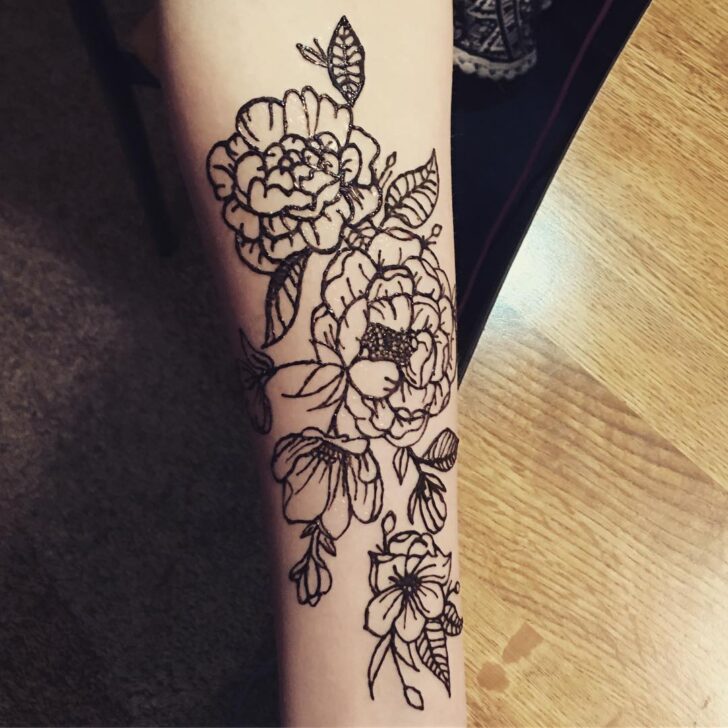
Each flower and vine can be detailed with intricate patterns, adding depth and texture to the design. This tattoo is ideal for those who love nature and want a design that reflects the beauty and complexity of the natural world.
5. Elephant
An elephant henna tattoo is a symbol of strength, wisdom, and good fortune. Elephants are revered in many cultures for their intelligence, loyalty, and protective nature, making them a powerful symbol in henna art.

The design often features the elephant adorned with intricate patterns, such as mandalas, paisleys, and other decorative elements, creating a majestic and detailed image. This tattoo is perfect for those who value wisdom, strength, and the idea of overcoming obstacles with grace and dignity.
6. Sun
A sun henna tattoo is a vibrant and uplifting design that symbolizes life, energy, and positivity. The sun is often depicted with rays extending outward, sometimes combined with intricate patterns or surrounding motifs like flowers or vines.
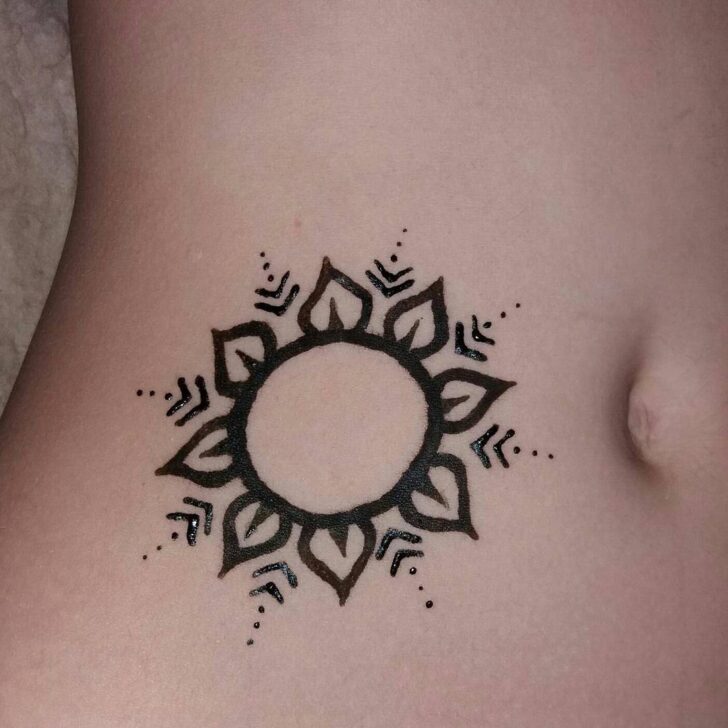
This design is ideal for placement on the back of the hand, shoulder, or chest, where it can radiate warmth and light. A sun henna tattoo is perfect for those who want to carry a symbol of hope and vitality with them, reminding them to stay positive and embrace the energy of life.
7. Lotus Flower
A lotus flower henna tattoo is a symbol of purity, enlightenment, and spiritual growth. The lotus is a revered symbol in many cultures, representing the idea of rising above challenges and achieving spiritual awakening.
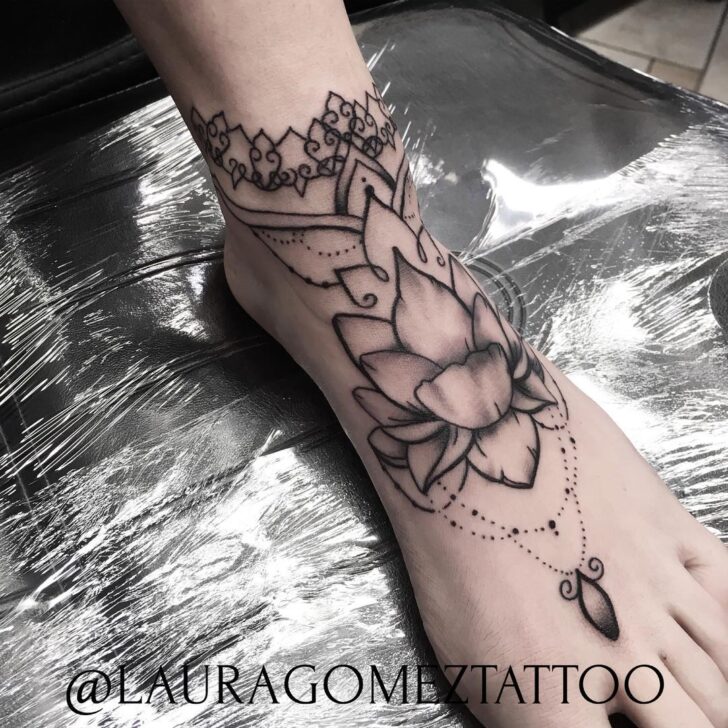
The design typically features the lotus in full bloom, often with intricate detailing of the petals and surrounding patterns. This tattoo is often placed on the hands, feet, or lower back, where it can serve as a reminder of inner peace and personal growth. It’s a meaningful choice for those on a journey of self-discovery and spiritual enlightenment.
8. Hamsa Hand
A Hamsa hand henna tattoo is a protective symbol that represents safety, good fortune, and the warding off of evil. The Hamsa hand is often depicted with an eye in the center of the palm, surrounded by intricate patterns and designs.
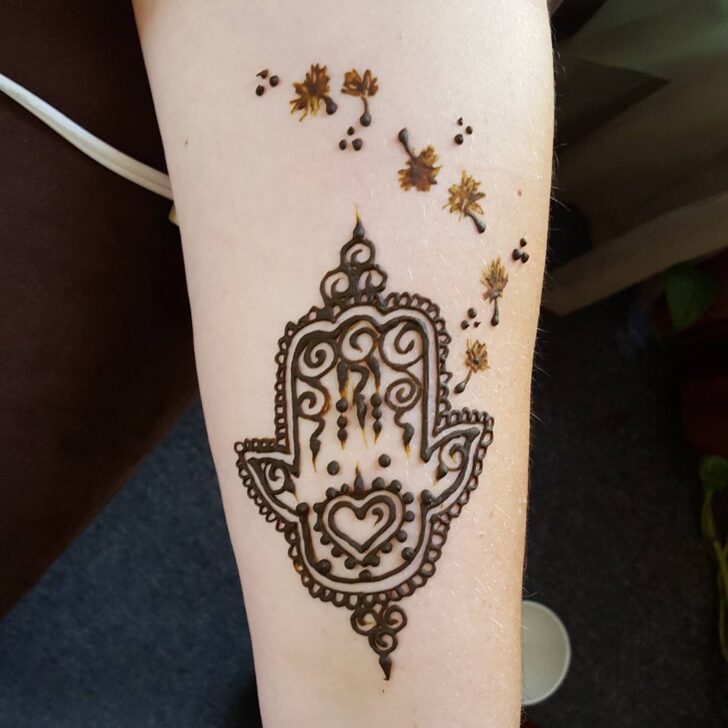
This tattoo is commonly placed on the palm, wrist, or back of the hand, where it can serve as a talisman against negative energies. The Hamsa hand is a powerful and meaningful design for those who seek protection and positive energy in their lives.
9. Crescent Moon
A crescent moon henna tattoo is a mystical and enchanting design that symbolizes intuition, femininity, and the cycles of life. The moon is often associated with the night, dreams, and the subconscious mind, making it a powerful symbol in henna art.

The design can be simple, featuring just the crescent moon, or more elaborate with additional stars, patterns, or surrounding motifs. This tattoo is perfect for those who feel a deep connection to the moon and its phases, and who want to celebrate their intuitive and feminine nature.
10. Scorpion
A scorpion henna tattoo is a bold and powerful design that symbolizes protection, strength, and resilience. Scorpions are known for their ability to defend themselves and their fierce nature, making them a popular choice for those who want to embody strength and courage.

The design often features the scorpion with its tail arched and ready to strike, sometimes combined with additional patterns or elements to enhance the overall look. This tattoo is ideal for those who want a design that reflects their ability to face challenges head-on and protect themselves and their loved ones.
11. Peacock Feather
A peacock feather henna tattoo is a graceful and elegant design that symbolizes beauty, pride, and immortality. The feather, with its vibrant colors and eye-like pattern, is often associated with protection and spiritual awareness.
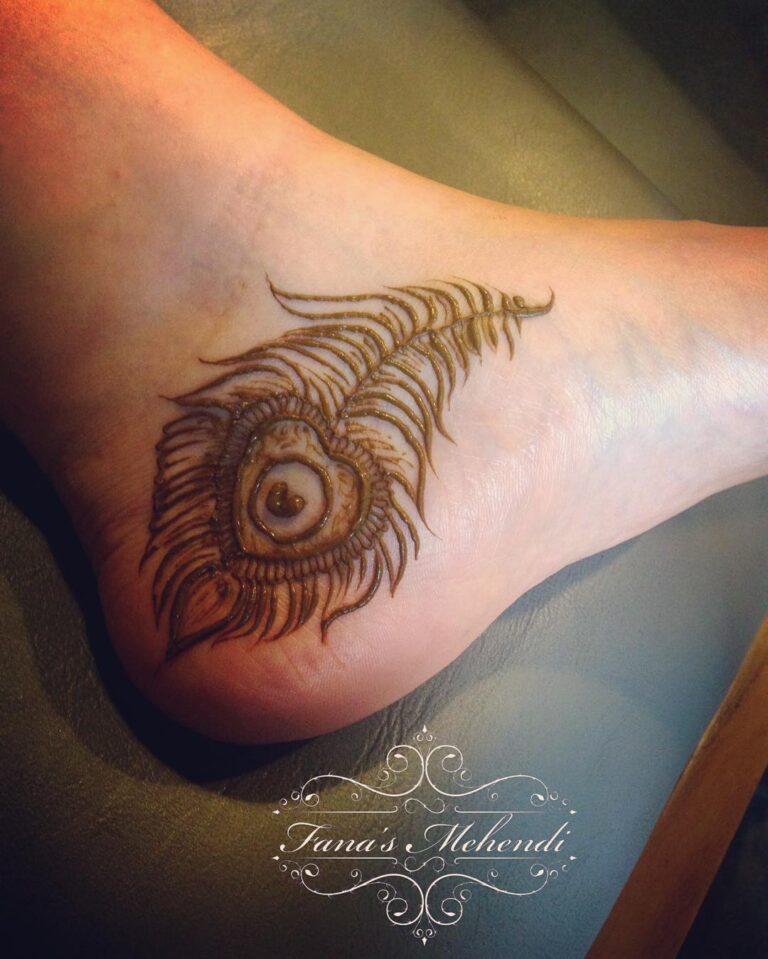
In henna art, the peacock feather can be depicted with intricate detailing, capturing the delicate nature of the feather while adding depth and texture. This tattoo is perfect for those who appreciate the beauty of nature and want a design that reflects their inner strength and grace.
12. Fish
A fish henna tattoo is a symbol of fertility, prosperity, and the flow of life. Fish are often associated with water, which represents the subconscious mind, emotions, and the idea of going with the flow.

The design can be simple, featuring just the outline of a fish, or more detailed with intricate patterns and surrounding elements like waves or lotus flowers. This tattoo is ideal for those who want a design that reflects their connection to water and their ability to adapt and flow with life’s changes.
13. Dreamcatcher
A dreamcatcher henna tattoo is a protective and spiritual design that symbolizes the filtering of negative energy and the protection of dreams. The dreamcatcher is often depicted with a circular web, feathers, and beads, sometimes combined with additional elements like flowers or mandalas.
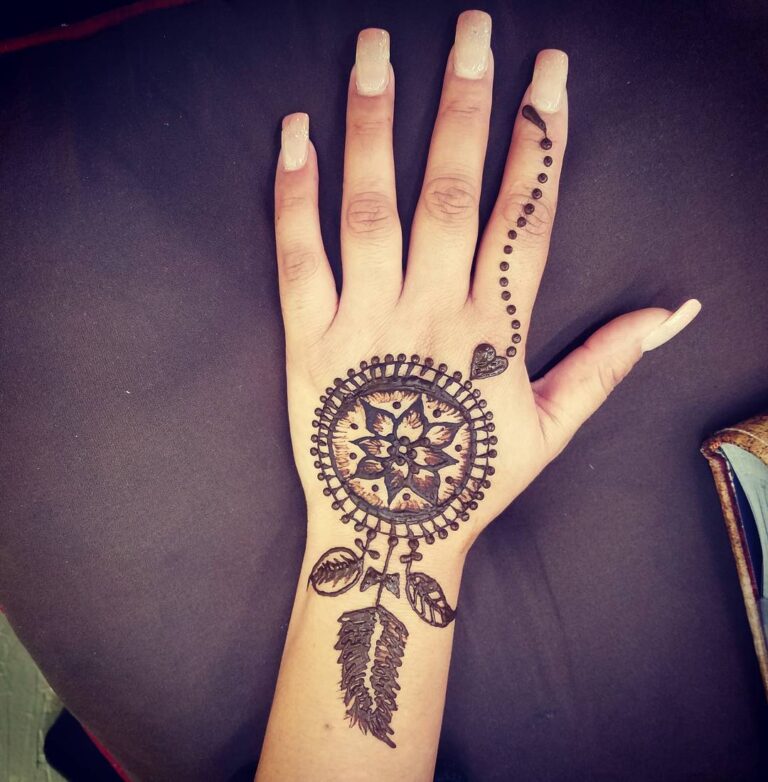
This tattoo is commonly placed on the shoulder, back, or thigh, where it can serve as a reminder of the power of dreams and the importance of positive energy. It’s a meaningful choice for those who want to protect their dreams and ward off negativity.
14. Dragon
A dragon henna tattoo is a powerful and mythical design that symbolizes strength, wisdom, and protection. Dragons are revered in many cultures for their fierce nature and their ability to control the elements, making them a popular choice for those who want to embody strength and courage.

The design often features the dragon in a dynamic pose, sometimes combined with additional patterns or elements like flames, clouds, or waves. This tattoo is perfect for those who want a design that reflects their inner power and their connection to ancient wisdom.
15. Ganesha
A Ganesha henna tattoo is a spiritual and auspicious design that symbolizes wisdom, prosperity, and the removal of obstacles. Ganesha, the elephant-headed god, is one of the most revered deities in Hinduism, often depicted with a large belly, multiple arms, and an elephant’s head.

The design can be simple, featuring just the outline of Ganesha, or more detailed with intricate patterns and surrounding elements like lotus flowers or om symbols. This tattoo is ideal for those who seek spiritual guidance and the blessings of Ganesha in their lives.
16. Sunflower
A sunflower henna tattoo is a bright and cheerful design that symbolizes happiness, positivity, and the warmth of the sun. Sunflowers are known for their ability to turn towards the sun, making them a symbol of optimism and growth.

The design often features a large, detailed sunflower with petals radiating outward, sometimes combined with additional elements like leaves, vines, or other flowers. This tattoo is perfect for those who want a design that reflects their sunny disposition and their love for life.
17. Evil Eye
An evil eye henna tattoo is a protective and mystical design that symbolizes the warding off of negative energy and the protection from harm. The evil eye is often depicted as a blue or black eye, sometimes surrounded by additional patterns or elements like hamsa hands, mandalas, or other protective symbols.
This tattoo is commonly placed on the wrist, back of the hand, or ankle, where it can serve as a talisman against negative energies. It’s a powerful and meaningful choice for those who want to protect themselves and their loved ones from harm.
18. Rose
A rose henna tattoo is a classic and romantic design that symbolizes love, beauty, and passion. Roses are often associated with love and romance, making them a popular choice for those who want to express their feelings through body art.

The design can be simple, featuring just the outline of a rose, or more detailed with shading, intricate patterns, and additional elements like leaves, vines, or other flowers. This tattoo is perfect for those who want a design that reflects their love for someone special or their appreciation for the beauty of life.
19. butterfly
A butterfly henna tattoo is a delicate and symbolic design that represents transformation, freedom, and the beauty of change. Butterflies are often associated with the idea of metamorphosis, making them a powerful symbol of personal growth and change.
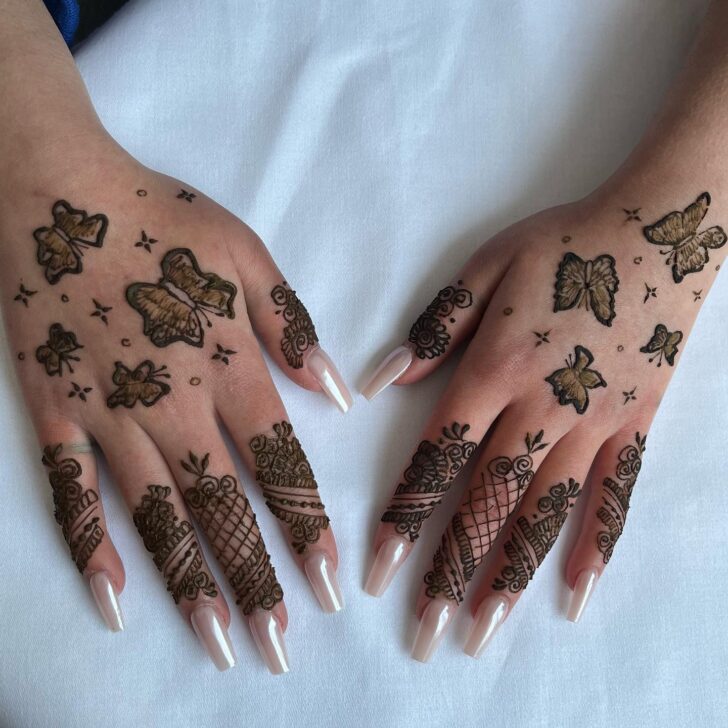
The design can be simple, featuring just the outline of a butterfly, or more detailed with intricate patterns, shading, and additional elements like flowers or vines. This tattoo is ideal for those who are on a journey of self-discovery and want a design that reflects their ability to embrace change and new beginnings.
20. Feather
A feather henna tattoo is a light and airy design that symbolizes freedom, spirituality, and the connection to the divine. Feathers are often associated with birds, which are seen as messengers between the earthly and spiritual realms.
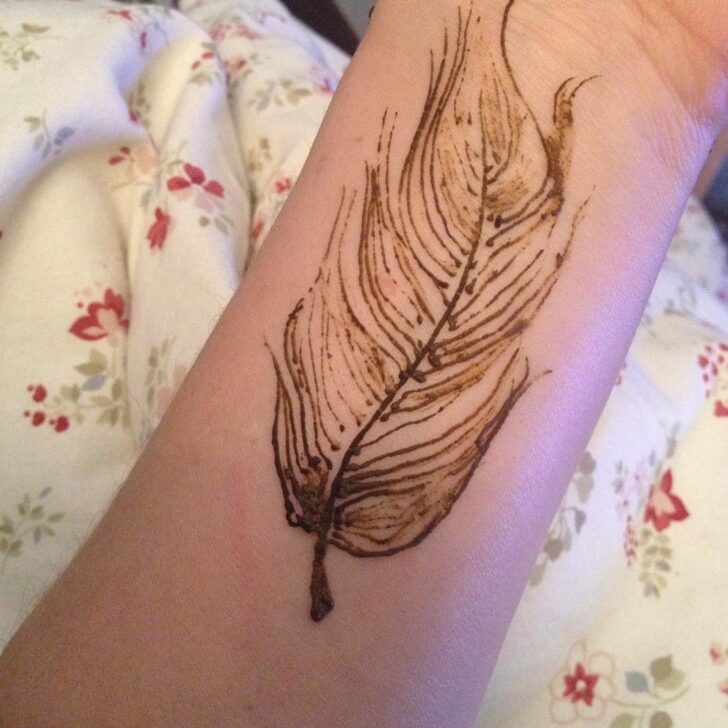
The design can be simple, featuring just the outline of a feather, or more detailed with intricate patterns, shading, and additional elements like birds, clouds, or other natural motifs. This tattoo is perfect for those who want a design that reflects their free-spirited nature and their connection to the spiritual world.
21. Phoenix
A phoenix henna tattoo is a powerful and mythical design that symbolizes rebirth, renewal, and the triumph over adversity. The phoenix is a legendary bird that is said to rise from its own ashes, making it a symbol of resilience and the ability to overcome challenges.

The design often features the phoenix in a dynamic pose, sometimes combined with additional elements like flames, clouds, or other symbolic patterns. This tattoo is ideal for those who have gone through difficult times and want a design that reflects their strength and ability to rise above challenges.
22. Om Symbol
An Om symbol henna tattoo is a spiritual and sacred design that represents the essence of the universe and the sound of creation. The Om symbol is often used in meditation and spiritual practices, making it a powerful symbol of inner peace, harmony, and connection to the divine.

The design is simple yet profound, featuring the Om symbol in its traditional form, sometimes combined with additional patterns or elements like lotus flowers, mandalas, or other spiritual motifs. This tattoo is perfect for those who seek spiritual enlightenment and a deeper connection to the universe.
23. Tree of Life
A Tree of Life henna tattoo is a meaningful and symbolic design that represents growth, strength, and the interconnectedness of all living things. The Tree of Life is often depicted with a strong trunk, deep roots, and spreading branches, sometimes combined with additional elements like leaves, fruits, or birds.

This design is ideal for placement on the back, chest, or forearm, where it can serve as a reminder of the importance of staying grounded and connected to the world around us. It’s a powerful and meaningful choice for those who value growth and the cycle of life.
24. Peony
A peony henna tattoo is a beautiful and romantic design that symbolizes love, prosperity, and honor. Peonies are often associated with wealth and good fortune, making them a popular choice for those who want to attract positive energy and abundance into their lives.
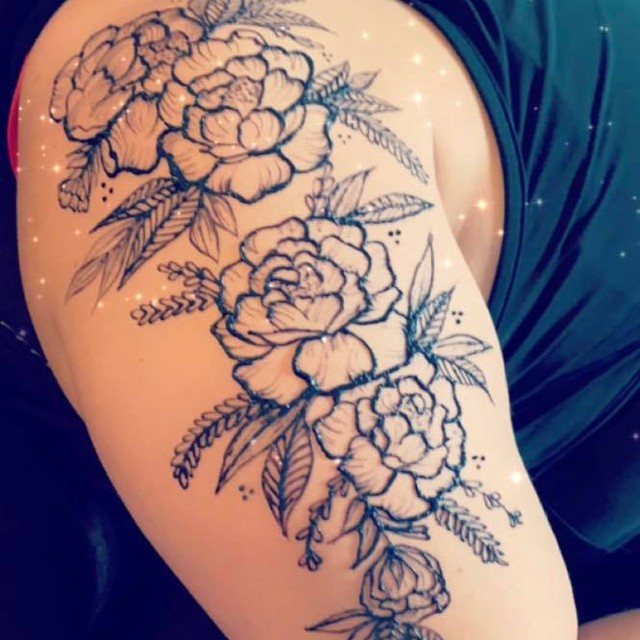
The design can be simple, featuring just the outline of a peony, or more detailed with shading, intricate patterns, and additional elements like leaves, vines, or other flowers. This tattoo is perfect for those who appreciate the beauty of nature and want a design that reflects their desire for love and prosperity.
25. Swan
A swan henna tattoo is a graceful and elegant design that symbolizes love, purity, and transformation. Swans are often associated with loyalty and the idea of lifelong love, making them a popular choice for those who want to express their commitment to a partner or loved one.
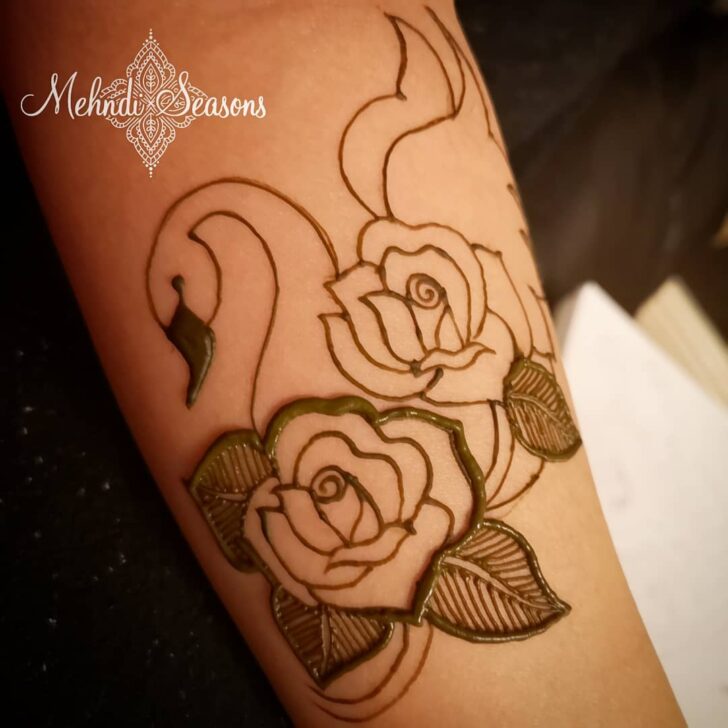
The design can be simple, featuring just the outline of a swan, or more detailed with shading, intricate patterns, and additional elements like water, flowers, or other natural motifs. This tattoo is perfect for those who value love, loyalty, and the beauty of transformation in their lives.
Henna Tattoo Aftercare Tips
Caring for your henna tattoo properly will help you get a darker stain and make it last longer. Because henna is a natural dye, it interacts with your skin differently depending on body temperature, skin type, and aftercare methods.
1. Leave It On As Long As Possible
For the richest color, let the paste stay on your skin for at least 6–8 hours—overnight is even better. The longer it stays on, the deeper the dye penetrates the skin. Avoid brushing or flaking it off too early.
2. Avoid Water Right After Removal
After scraping off the dried paste, avoid washing the area for 12–24 hours. Water can dilute the stain before it has fully set. Instead, remove the paste with a tissue, dry towel, or natural oil like coconut or olive oil.
3. Use Heat and Lemon Sugar
Applying heat (like from a hairdryer or warm cloth) and dabbing your design with a lemon-sugar mixture while the paste is on helps the henna stain darker. The sugar helps the paste stick, while lemon juice activates the dye.
4. Keep Skin Moisturized
Dry skin causes faster fading. Use natural oils like shea butter or coconut oil to protect the design, especially after the first day. Avoid alcohol-based lotions, which can speed up fading.
5. Avoid Soaps and Scrubbing
Minimize contact with water, soap, or exfoliating products—especially in the first 48 hours. When bathing, try to keep the tattooed area dry or gently pat dry if wet.
With proper care, your henna tattoo can last 1–3 weeks, gradually fading with your skin’s natural exfoliation cycle.
Final Thoughts
Henna tattoos offer a unique way to express yourself, connect with cultural traditions, or simply enjoy temporary body art. Whether you’re attending a special event, exploring your artistic side, or just looking for a fun, natural tattoo alternative, henna provides versatility, beauty, and symbolism all in one.
What makes henna truly special is its impermanence. You can try new styles, explore different placements, or even experiment with fusion designs without long-term commitment. Plus, its plant-based formula makes it safe for most skin types when used correctly.
Still, quality matters. Choosing the right henna paste (natural, no additives), a skilled artist, and proper aftercare will greatly enhance your experience. And as with any body art, knowing the meaning behind your design adds personal depth and significance.
Henna isn’t just for weddings or festivals anymore—it’s a growing trend in fashion, wellness, and personal self-care. Whether you lean toward traditional patterns or modern interpretations, there’s a henna design for every mood and moment.
So the next time you’re looking for a meaningful, beautiful, and natural form of expression—consider henna. It’s not just a tattoo; it’s a temporary work of art that leaves a lasting impression.
FAQs About Henna Tattoos
1. How long do henna tattoos last?
Henna tattoos typically last between 1 to 3 weeks, depending on a few key factors: your skin type, placement area, the quality of the henna paste, and how well you care for it afterward. Areas like the hands and feet tend to absorb the henna dye more deeply, resulting in darker and longer-lasting stains—sometimes even up to 3 weeks. In contrast, tattoos on the upper arms, back, or torso may fade faster due to thinner skin or less heat absorption.
To prolong the lifespan of your henna design, avoid washing the area with soap for the first 24 hours, moisturize daily with natural oils (like coconut or olive oil), and steer clear of exfoliating scrubs or alcohol-based products. Exposure to chlorinated water (like in pools) and excessive sweating can also cause henna to fade more quickly.
Everyone’s skin regenerates differently, so while some people may see their tattoo last nearly a month, others may notice fading in just over a week. Regardless, the gradual fading process is usually smooth and natural, making henna tattoos an ideal temporary option for body art.
2. Is henna safe for all skin types?
Natural henna is generally safe for most skin types. It’s made from the powdered leaves of the Lawsonia inermis plant and has been used for centuries without issue. However, some people may still experience mild allergic reactions or skin sensitivities, especially if they have very sensitive skin or allergies to natural dyes. To be safe, it’s recommended to do a patch test—apply a small amount of henna paste to your inner arm and wait 24 hours to check for any irritation.
Avoid “black henna” at all costs. It often contains para-phenylenediamine (PPD), a chemical dye that can cause serious allergic reactions, burns, and even long-term skin damage. If the henna you’re buying is jet black, smells like chemicals, or stains the skin instantly, it’s likely unsafe.
When buying henna, look for 100% natural ingredients, ideally from trusted sellers or artists who make their own paste using henna powder, lemon juice, sugar, and essential oils like eucalyptus or lavender. If you’re pregnant, nursing, or have eczema or psoriasis, consult your doctor before applying henna, even if it’s all-natural.
3. Can I apply a henna tattoo myself at home?
Yes, you absolutely can apply a henna tattoo at home—especially with a bit of practice and the right tools. DIY henna kits are widely available online or in craft stores and typically come with cones or bottles of henna paste, design stencils, and sometimes even lemon sugar sealant.
Start by choosing a design. Beginners may want to use stencils or draw simpler patterns like vines, dots, or mandalas. Practice on paper first to build confidence. Make sure your skin is clean and free of lotion or oils before applying.
Once you draw your design, let the paste dry for at least 6–8 hours—overnight if possible—for a deep, long-lasting stain. Apply a lemon-sugar mix occasionally while it dries to help it stick and darken. After it dries and cracks, scrape the paste off gently (don’t wash it with water), then avoid water contact for another 12–24 hours.
While the first attempt might not be perfect, henna is temporary, forgiving, and a fun way to get creative. The more you practice, the better your designs will get. For complex or event-ready designs, hiring a professional artist is still a great option.
4. What’s the difference between henna and jagua tattoos?
Henna and jagua are both natural, plant-based options for temporary tattoos, but they differ in source, color, and application. Henna is made from the Lawsonia inermis plant and produces a reddish-brown to deep maroon stain. It’s more traditional and widely used in Indian, Middle Eastern, and North African cultures. Henna designs are typically floral, intricate, and symbolic.
Jagua, on the other hand, is derived from the Genipa americana fruit, native to South America. When applied to the skin, jagua creates a blue-black stain, often mimicking the appearance of a real tattoo. It’s a popular option for people who want a bolder, darker, and more realistic look.
Both are temporary, lasting about 1–3 weeks, and both require careful aftercare. However, jagua is more likely to cause allergic reactions, especially for people sensitive to fruit-based ingredients. Always perform a patch test before using it.
In summary, if you’re looking for traditional, warm-toned designs, henna is your go-to. If you want a tattoo-like black look, jagua may be the better choice. Some artists even combine both for multidimensional body art.